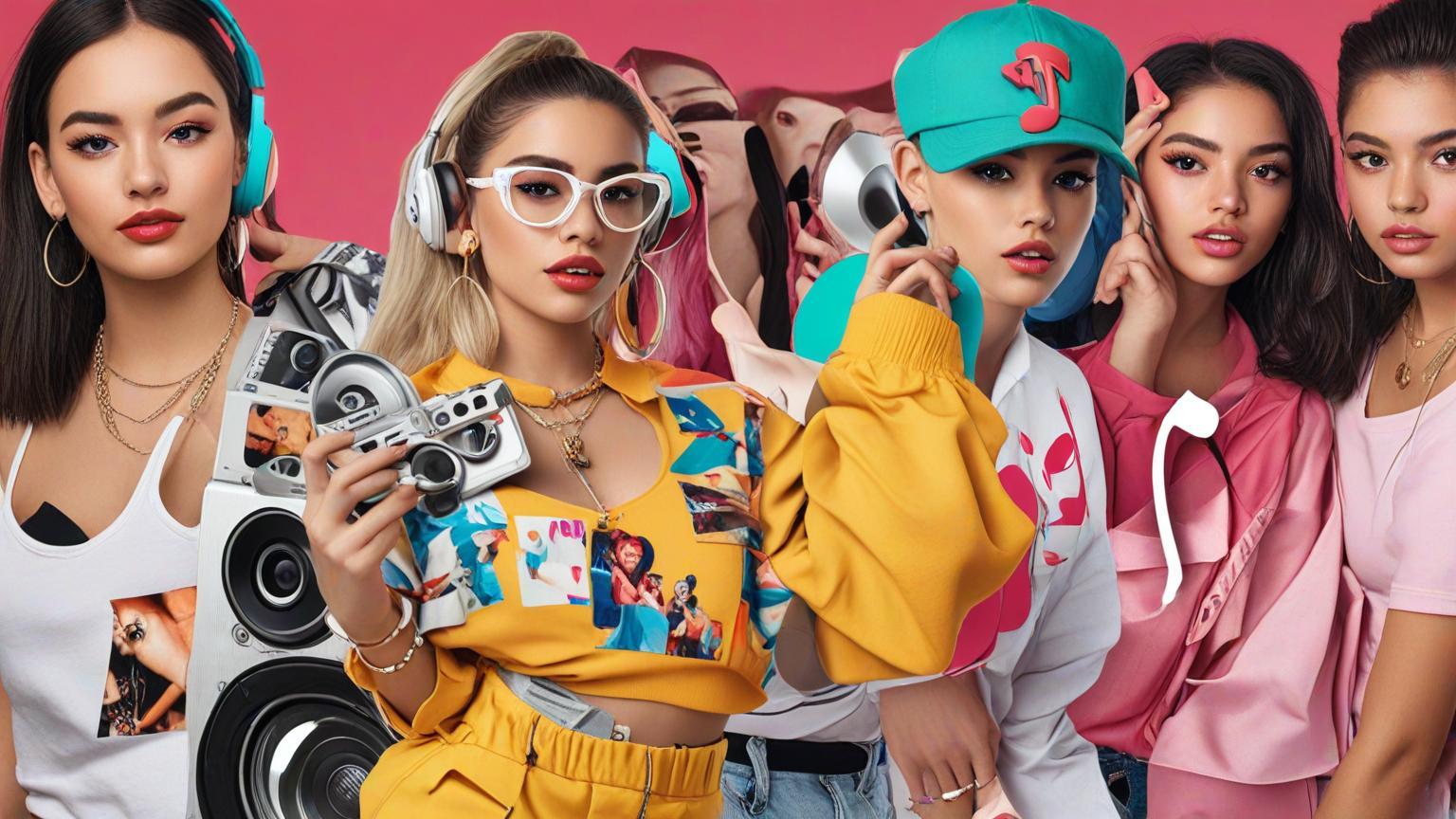In the swirling vortex of 21st-century culture, defining the borders between fashion and music seems an exercise in futility. These two powerhouse industries have been co-conspirators for decades, crafting an unholy alliance that blurs the lines between artistic expression and commercial venture. However, the digital age has accelerated this partnership, with social media platforms and streaming services altering the very DNA of how fashion and music intersect.
### The New Frontier: Social Media's Reign
With the rise of platforms like TikTok and Instagram, musicians are not just artists; they are influencers, style icons, and brand ambassadors. Consider the meteoric rise of artists like Lil Nas X and Doja Cat, who leverage their sound to fashion trends that sweep across digital landscapes. These artists don’t merely wear clothing; they set trends, crafting their personal styles that resonate with millions of followers.
This phenomenon is not one-sided. Fashion brands are equally dependent on musicians to give their collections the ever-elusive aura of ‘cool’. Brands like Balenciaga and Off-White have collaborated with musicians to take advantage of their fanbase and reach. The recent collaboration between Harry Styles and Gucci is a perfect case study in how fashion houses bet on music artists to remain relevant in a hyper-competitive market.
### The Streamer Invasion
Streaming has done to music what fast fashion did to clothing: it democratized access while intensifying competition. Musicians can drop a new track on Spotify and have it play during a fashion week livestream within hours. This instant access has led to some delightfully unexpected collaborations, like Billie Eilish’s partnership with Stella McCartney, a brand known for its sustainability and ethical approach. These alliances go beyond surface-level branding—Eilish’s commitment to veganism and sustainable fashion aligned naturally with McCartney’s ethos, offering more than just celebrity endorsement.
Yet, with great power comes great scrutiny. Streamers, like Netflix and Apple Music, are loaded with exclusive fashion documentaries and musician biopics that delve into the creative processes and personal exploits of their subjects. While they entertain, they also shape narratives that sometimes serve commercial agendas, steering public discourse in directions that benefit both industries.
### Cultural Synthesis: Where Fashion Meets Genre
Every genre has its symbiotic relationship with fashion. Hip-hop and streetwear, a pairing as familiar as PB&J, have become almost inseparable in public perception. Look no further than partnerships like Rihanna’s Fenty Beauty line and Puma, or Kanye West with Adidas' Yeezy brand. These ventures are not mere cash grabs; they represent broader cultural movements that inform and redefine the style codes of global youth.
Rock and high fashion also share a storied history. Artists like Lady Gaga and Grimes have used avant-garde fashion as a vehicle to express their music’s abstract themes. Their choices are as pivotal as their lyrics, challenging societal norms and reshaping aesthetic boundaries.
### The Role of Digital Identity
In our hyper-digital existence, musicians and fashion icons have become avatars, often curating their online identities with the same precision we once reserved for album releases or runway shows. Musicians release album covers that double as high-fashion statements, while fashion designers employ narrative storytelling akin to music videos to showcase collections.
Digital identities have a major role in determining what is trendy and what is passé. This veneer of authenticity is crucial in the digital age—for fans crave more than just 'content'; they seek connection, relatability, and a sense of belonging.
### Looking Ahead: Innovations and the Future
As we advance into a future dominated by AI and virtual reality, the collaboration between fashion and music shows no signs of slowing. Virtual influencers and AI-generated songs are paving paths that would have been unthinkable a decade ago. Imagine attending a virtual fashion show with the accompanying score crafted by an AI that analyzes your current mood, environment, and historical preferences.
With the rise of digital fashion—clothing that exists only in pixel-form—the intersection between these two domains could redefine personal expression. Musicians can license digital wardrobes available exclusively for fans to collect as NFTs, blending the allure of fashion with the accessibility of digital content.
The partnership between music and fashion is a perpetual feedback loop of innovation and influence. In the captivating chaos of the digital age, these industries continue to inspire each other, crossing boundaries and redefining the very essence of artistry.
Deconstructing Fashion and Music's Intricate Dance in the Digital Age

